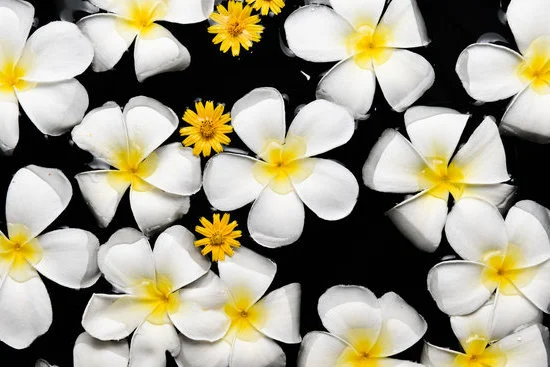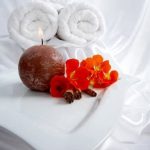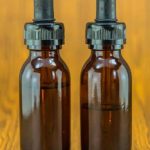The ancient practice of aromatherapy has been ingrained in human civilization for thousands of years, and one of the earliest records of its existence can be traced back to 3000 BC China. In this blog post, we will delve into the origins of aromatherapy in ancient Chinese culture and explore the practices and beliefs surrounding this ancient healing art.
Aromatherapy is a holistic therapy that utilizes the natural properties of aromatic plants and essential oils to promote physical, mental, and emotional well-being. It involves the use of these oils through various methods such as inhalation, massage, or bath rituals. This form of therapy has always played a significant role in ancient civilizations, with China being one of the prominent cultures that embraced its power.
Ancient Chinese medicine has long been known for its comprehensive approach to healthcare, focusing on natural remedies rather than invasive procedures. Essential oils were an integral part of this holistic system, offering their therapeutic benefits to restore balance and harmony within the body. In this section, we will discuss the historical context surrounding aromatherapy in ancient China and examine how it became intertwined with traditional Chinese medicine (TCM).
Historical Context
The Holistic Approach of Ancient Chinese Medicine
Ancient Chinese medicine is rooted in a holistic approach to healing that emphasizes the balance of mind, body, and spirit. This ancient system places great importance on natural remedies derived from plants and herbs, which are believed to possess powerful healing properties. Essential oils, extracted from various plants through methods such as steam distillation or cold-pressing, are one of the key components of these remedies.
Essential Oils in Ancient Chinese Healing Practices
Essential oils have been used in traditional Chinese medicine (TCM) for thousands of years. These aromatic oils are considered to be potent sources of healing energy, known as “qi,” that can be harnessed to restore balance within the body and promote overall well-being. In TCM, essential oils are believed to possess specific therapeutic properties that can address a wide range of ailments.
One example of an essential oil commonly used in ancient Chinese medicine is lavender oil. Lavender oil was highly regarded for its calming and sedative properties, making it an effective treatment for anxiety, insomnia, and headaches. Another popular essential oil in TCM is peppermint oil, which was used for its invigorating and analgesic effects. The cooling nature of peppermint oil made it suitable for treating fevers, digestive issues, and respiratory congestion.
The Integration of Aromatherapy into Traditional Chinese Medicine
Aromatherapy played a significant role in TCM as a means to restore harmony within the body and treat various ailments. According to TCM principles, the human body is composed of opposing energies known as yin and yang. When these energies become imbalanced or blocked, illnesses can arise. Aromatherapy was seen as a way to help rebalance these energies by stimulating certain meridian points on the body with specific essential oils.
Additionally, TCM practitioners believed that different aromas had the power to influence specific organs and emotions. For example, the scent of rose oil was associated with opening the heart meridian and promoting feelings of love, while the scent of citrus oils such as orange or grapefruit were thought to invigorate the liver meridian and uplift mood.
Overall, ancient Chinese medicine embraced aromatherapy as an integral part of its comprehensive healing system. By recognizing the therapeutic properties of essential oils, TCM practitioners were able to utilize these oils to enhance physical and emotional well-being for thousands of years.
Traditional Chinese Medicine (TCM)
Ancient China was home to one of the most sophisticated and holistic healing systems in the world: Traditional Chinese Medicine (TCM). TCM is rooted in the belief that the body, mind, and spirit are interconnected, and its philosophy is centered around achieving balance and harmony within the body. Aromatherapy played a central role in this ancient healing system, offering a natural way to restore equilibrium and promote overall well-being.
At the core of TCM is the concept of yin and yang energies. Yin represents the feminine, passive, and cooling aspects of energy, while yang symbolizes the masculine, active, and warming aspects. According to TCM principles, an imbalance or blockage of these energies can lead to physical or emotional ailments. Aromatherapy was embraced as a therapeutic tool to help harmonize these energies and alleviate various health issues.
Incorporating essential oils into TCM practices allowed for a more targeted approach to healing. Each essential oil possesses unique properties that correspond to specific meridians or energy pathways within the body. By selecting appropriate oils based on their therapeutic properties, TCM practitioners were able to address specific ailments or imbalances effectively.
For example, lavender essential oil was often used for its calming properties and its ability to soothe agitation in both the mind and body. On the other hand, eucalyptus oil was valued for its invigorating effects on lung function and its ability to clear congestion caused by colds or respiratory infections. These are just a few examples among many other oils used in TCM aromatherapy.
Aromatherapy also played a vital role in promoting overall wellness in TCM. Regular use of essential oils helped strengthen the immune system, reduce stress levels, enhance sleep quality, and promote mental clarity. It was not only used as a treatment for existing health conditions but also as a preventative measure to maintain optimal well-being.
| Essential Oil | Therapeutic Properties | Meridians/Conditions |
|---|---|---|
| Lavender | Calming, soothing | Heart meridian – stress, insomnia |
| Eucalyptus | Invigorating, decongestant | Lung meridian – respiratory issues |
| Patchouli | Grounding, balancing | Spleen meridian – digestion, mood regulation |
The Aromatherapy Book of 3000 BC China
Uncovering an Ancient Aromatherapy Treasure
In the realm of ancient aromatherapy practices, one fascinating discovery stands out: an ancient aromatherapy book from 3000 BC China. This remarkable finding unveils a wealth of knowledge and wisdom about the historical roots of aromatherapy in Chinese culture. With its insights into the use of essential oils and their therapeutic properties, this ancient manuscript provides a unique glimpse into the world of aromatherapy during that time.
The existence of this ancient aromatherapy book is a testament to the significance and value placed on natural remedies in ancient Chinese society. It indicates that even several millennia ago, people recognized the healing power of nature and sought ways to harness it for their well-being. By uncovering and studying this valuable artifact, we can gain a deeper understanding of the rich history and traditions surrounding aromatherapy in China.
Unraveling the Significance
This ancient aromatherapy book holds immense importance in unraveling the significance of aromatherapy practices in ancient China. By examining its contents, we can gain valuable insights into the specific essential oils used during that period, as well as their intended purposes. Additionally, studying this manuscript allows us to understand how these healing practices were deeply intertwined with other aspects of Chinese culture such as Traditional Chinese Medicine (TCM) and daily rituals.
Importantly, this book also sheds light on how aromatherapy was perceived by ancient Chinese individuals. By exploring their beliefs and practices surrounding essential oils, we can delve into not just their physical benefits but also their psychological and spiritual significance. This understanding enables a comprehensive appreciation for the holistic approach to healing that existed thousands of years ago in China.
Ancient Wisdom for Modern Well-being
The unveiling of this ancient aromatherapy book serves not only as an opportunity for historical exploration but also presents modern-day practitioners and enthusiasts with an invaluable resource. By revisiting the ancient wisdom contained within its pages, individuals interested in aromatherapy can gain inspiration for their own practices today.
Understanding the historical roots of aromatherapy allows us to appreciate the timeless nature of this healing art form. It highlights the enduring relevance of using essential oils for well-being and provides a foundation upon which modern-day aromatherapists can build their knowledge and skills. By embracing both traditional practices and contemporary advancements, we can continue to reap the benefits of aromatherapy while honoring its origin in ancient China.
Key Extracts and Recipes from the Aromatherapy Book
In exploring the ancient aromatherapy practices of China during 3000 BC, it is essential to delve into the key extracts and recipes found in the aromatherapy book from that time. This ancient text provides valuable insights into the use of essential oils and their therapeutic properties in traditional Chinese medicine (TCM). Within its pages, one can find a plethora of remedies and blends intended to address various physical and emotional ailments.
One notable extract from the aromatherapy book mentions the use of lavender oil for its calming effects on the mind and body. Lavender was believed to have purifying properties that could dissipate negative energies and promote relaxation. Another extract highlights the importance of eucalyptus oil for respiratory health. Eucalyptus was recognized for its ability to clear congested airways and alleviate symptoms of coughs, colds, and sinusitis.
Apart from individual extracts, several aromatherapy recipes or blends were mentioned in the book as well. One such recipe is referred to as “The Harmony Blend,” which combines essential oils like rosewood, geranium, and ylang-ylang. This blend was used to restore balance between yin and yang energies within the body, promoting overall well-being. Another recipe known as “The Soothing Balm” integrated ingredients like chamomile oil, bergamot oil, and jojoba oil to soothe skin irritations and aid in relaxation.
These key extracts and recipes provide a glimpse into the ancient wisdom surrounding aromatherapy in China during 3000 BC. They illustrate how essential oils were carefully chosen based on their therapeutic properties to treat various ailments. In modern-day practice, these historic remedies still hold relevance as they continue to be cherished for their natural healing benefits.
To explore more about these key extracts and recipes from 3000 BC China’s aromatherapy book, visit our website for detailed information and instructions on their preparation and usage.
Rituals and Practices
In ancient China during 3000 BC, aromatherapy was not just limited to occasional treatments or medicinal remedies. Instead, it was deeply ingrained in the daily lives of the Chinese people, becoming an integral part of their rituals and practices. These everyday aromatherapy rituals were believed to promote physical, emotional, and spiritual well-being.
One common practice in ancient China was the burning of incense. Incense sticks or powders infused with essential oils were commonly burned in homes, temples, and other sacred spaces. The aroma from these incense sticks was believed to purify the air and create a harmonious environment conducive to relaxation and meditation.
Another popular ritual that incorporated aromatherapy was the use of essential oils in herbal baths. The Chinese would add aromatic herbs and oils to their bathwater for their therapeutic benefits. Apart from cleansing the body, these baths were seen as a way to balance energies and restore harmony within oneself.
Furthermore, aromatherapy played a significant role in traditional Chinese massages known as Tui Na. Essential oils would be mixed with carrier oils such as sesame or almond oil and used during massages to alleviate pain, reduce inflammation, and stimulate circulation. The combination of healing touch and fragrant oils created a holistic experience that promoted overall well-being.
Overall, these everyday aromatherapy practices highlight the deep-rooted belief in the power of fragrance and its ability to create balance both physically and mentally. By incorporating essential oils into various rituals such as incense burning, herbal baths, and massages, ancient Chinese individuals sought to enhance their quality of life by harnessing the natural healing properties found in plants.
To summarize:
- Incense burning was a common ritual that promoted relaxation and purification.
- Herbal baths with essential oils were used for balancing energies and restoring harmony.
- Aromatherapy was integrated into traditional Chinese massages to alleviate pain and stimulate circulation.
Aromatherapy’s significance in everyday life during 3000 BC China showcases the long-standing belief in the power of scent and its ability to enhance well-being. These practices continue to be relevant today, demonstrating the lasting legacy of ancient Chinese aromatherapy in modern-day China’s appreciation for traditional remedies and essential oils.
Cultural Significance
Ancient Chinese art and literature provide valuable insights into the cultural significance of aromatherapy during 3000 BC. Aromatherapy was deeply ingrained in various forms of artistic expression, including paintings, poetry, and even calligraphy. These art forms not only served as a means of creative expression but also depicted the role and importance of aromatherapy in Chinese society.
In ancient Chinese paintings, the presence of aromatic plants and flowers was a common motif. Artists beautifully rendered scenes filled with blooming flowers, lush gardens, and even incense burners to represent the use of essential oils in daily life. The inclusion of these elements emphasized the cultural appreciation for aromatherapy as an integral part of one’s well-being.
Moreover, poetry played a significant role in capturing the essence and symbolism of aromatherapy in ancient China. Poets often composed verses evoking scents and fragrances to convey emotions or describe natural landscapes. The use of aroma-related metaphors further reinforced the connection between scent and human experiences.
One notable literary work that exemplifies the cultural significance of aromatherapy is “The Classic of Poetry,” known as “Shijing” in Chinese. This collection includes numerous poems that reference aromatic plants such as lavender, rosemary, and jasmine, emphasizing their healing properties and soothing effects on both body and mind.
| Art Form | Example |
|---|---|
| Paintings | Blooming flower-filled landscapes depicting daily life rituals involving essential oils |
| Poetry | Verses invoking scents to express emotions or describe natural settings with aromatic plants |
| Literary Work | “Shijing” (The Classic of Poetry) – poems referencing aromatherapy and its healing effects |
The cultural significance of aromatherapy in ancient Chinese art and literature highlights the deep-rooted belief in the therapeutic power of scents and essential oils. The integration of aromatherapy into artistic expression reflects its importance as a holistic practice that encompasses not only physical well-being but also emotional and spiritual harmony. Furthermore, these artistic representations serve as a testament to the enduring legacy of aromatherapy in Chinese culture, with its historical roots extending back thousands of years.
Legacy and Modern-Day Relevance
In modern-day China, the ancient practice of aromatherapy continues to thrive and hold significance. The legacy of aromatherapy practices from ancient China has left a lasting impact on the culture and well-being of its people. Today, aromatherapy is still widely appreciated and utilized as a holistic approach to healing and restoring balance.
The traditional remedies of Chinese medicine, including the use of essential oils, are deeply ingrained in contemporary Chinese culture. Many individuals turn to aromatherapy as a complementary therapy to address various health concerns or simply promote overall wellness. Essential oils are commonly used in massage therapies, diffusers, beauty products, and even household cleaning agents.
Chinese people also embrace the use of essential oils in daily rituals and practices. Incense burning is a popular tradition that dates back centuries and remains a common practice today. The soothing scents released by incense sticks create an atmosphere of tranquility and relaxation. Furthermore, herbal baths infused with essential oils are known for their therapeutic properties and are believed to cleanse both the body and mind.
In recent years, there has been an increased interest in natural remedies and alternative healing methods in China. This has led to a resurgence in the popularity of traditional medicine practices like aromatherapy. Many shops now offer a wide range of essential oils sourced from various plants and flowers to cater to this growing demand.
Overall, the legacy of aromatherapy in ancient China has evolved into a modern-day relevance that is deeply rooted in Chinese culture. By embracing the historical roots of these practices, individuals today can tap into the wisdom of their ancestors and experience the holistic benefits that come from incorporating aromatherapy into their lives.
Conclusion
In conclusion, the exploration of aromatherapy practices in ancient China during 3000 BC allows us to rediscover the rich history and cultural significance of this healing method. Through the use of essential oils and natural remedies, ancient Chinese civilization embraced a holistic approach to wellness that centered on restoring balance and harmony within the body. The integration of aromatherapy into Traditional Chinese Medicine (TCM) further highlighted its importance as a comprehensive healing system.
The unveiling of an ancient aromatherapy book from 3000 BC China provides valuable insights into the historical roots of aromatherapy in China. This book not only reveals the specific essential oils and blends used during that time but also offers a glimpse into the therapeutic properties attributed to them.
By studying these key extracts and recipes, we are able to appreciate the wisdom and knowledge passed down by our ancestors in harnessing nature’s gifts for physical, emotional, and spiritual well-being.
Moreover, aromatherapy was deeply ingrained in everyday life in ancient China. Rituals such as incense burning or herbal baths were accompanied by the use of essential oils, enhancing their effectiveness and creating a sensory experience for individuals. These practices were not only limited to personal care but also found expression in various art forms and literature. Aromatherapy became an integral part of Chinese culture and society during 3000 BC.
Today, we can still witness the lasting influence of aromatherapy practices from ancient China in contemporary Chinese culture. Traditional remedies and essential oils continue to be valued for their healing properties, and many individuals incorporate aromatherapy into their daily lives. By understanding the historical roots of aromatherapy, we gain a deeper appreciation for its modern-day applications and can continue to benefit from this centuries-old practice.
Frequently Asked Questions
What is the history of aromatherapy in China?
Aromatherapy has a long and rich history in China, dating back thousands of years. It is believed to have originated during the reign of Emperor Shen Nong, who is considered the father of Chinese herbal medicine. The use of aromatic plants and their essential oils was an integral part of traditional Chinese medicine, which aimed at maintaining balance and harmony in the body.
In ancient China, essential oils were used for various purposes, including as perfumes, for religious ceremonies, and to promote healing. The practice of aromatherapy in China continues to this day with the use of essential oils in massage therapy and natural remedies.
What country did aromatherapy originate?
While different cultures around the world have utilized the power of aromatherapy throughout history, it is believed that it originated in ancient Egypt. The Egyptians were skilled in extracting essential oils from various plants through distillation, maceration, or expression methods. They used these oils for medicinal purposes, cosmetics, embalming processes, and spiritual rituals.
Aromatic substances held great cultural significance in ancient Egypt; they were believed to connect humans with deities and hold protective properties. The knowledge and practices surrounding aromatherapy gradually spread to other civilizations across time.
What is the oldest essential oil?
The oldest known essential oil is cedarwood oil (Cedrus atlantica), derived from cedar trees. Cedarwood oil has been used for centuries due to its scent and therapeutic properties. It was commonly used by ancient civilizations such as the Egyptians for its insect-repelling abilities as well as its ability to promote relaxation and calmness.
Today, cedarwood oil continues to be popular in aromatherapy practices due to its grounding effect on emotions and its potential benefits for respiratory health and skin conditions like acne or eczema. Its longevity as an essential oil reflects its enduring popularity across cultures and time periods.

Are you looking for a natural way to improve your health and wellbeing?
If so, aromatherapy may be the answer for you.





